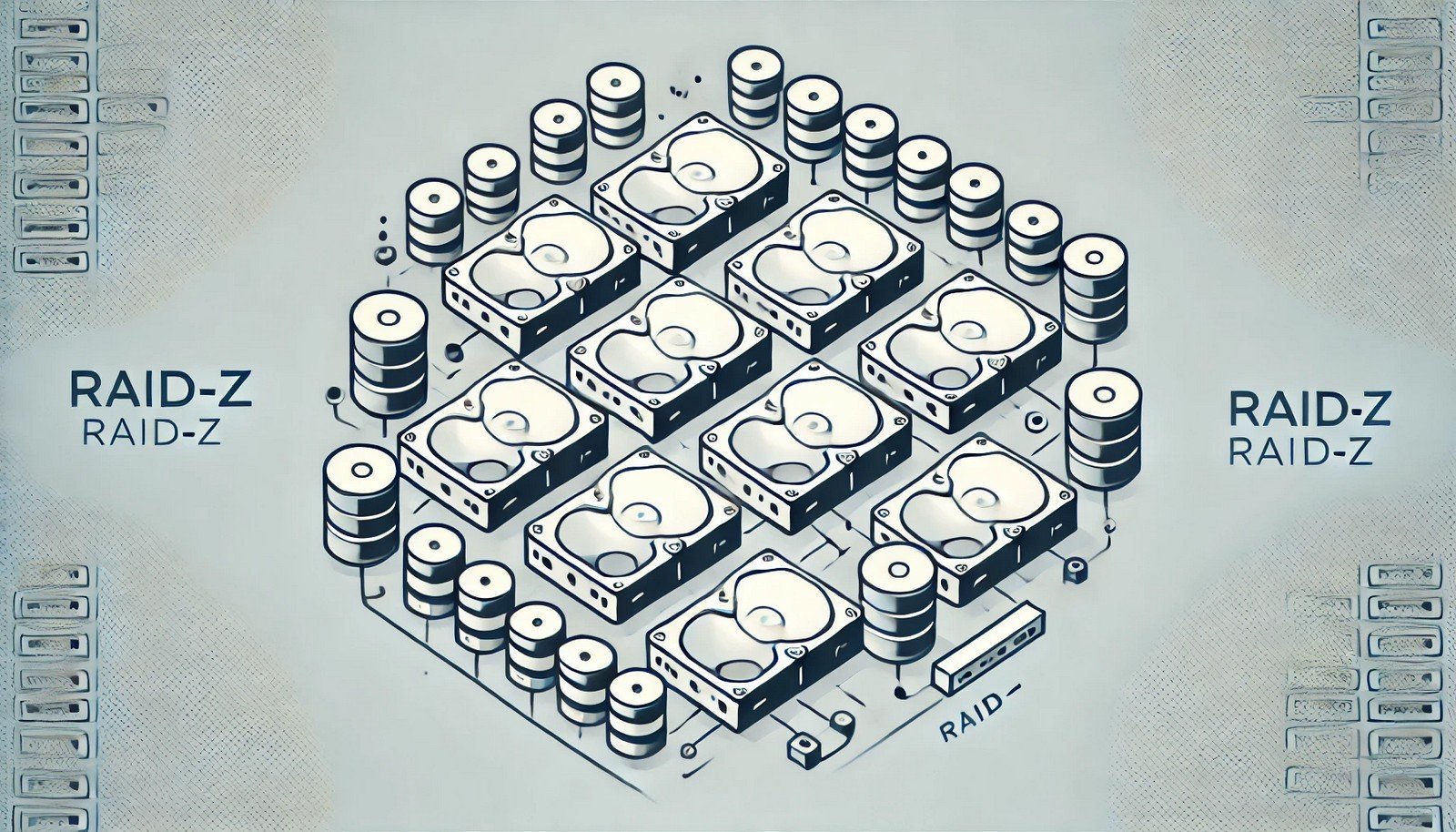RAID-Z
 (Representational Image | Source: Dall-E)
(Representational Image | Source: Dall-E)
Quick Navigation:
- RAID-Z Definition
- RAID-Z Explained Easy
- RAID-Z Origin
- RAID-Z Etymology
- RAID-Z Usage Trends
- RAID-Z Usage
- RAID-Z Examples in Context
- RAID-Z FAQ
- RAID-Z Related Words
RAID-Z Definition
RAID-Z is a software-based RAID (Redundant Array of Independent Disks) implementation used in the ZFS file system. It enhances data integrity and fault tolerance by utilizing a copy-on-write mechanism, ensuring that data is never overwritten in place. Unlike traditional RAID, RAID-Z dynamically distributes parity data across drives, eliminating the write hole problem. There are different levels of RAID-Z, including RAID-Z1 (single-parity), RAID-Z2 (double-parity), and RAID-Z3 (triple-parity), each offering increasing levels of redundancy to prevent data loss. RAID-Z is widely used in enterprise storage solutions and high-performance computing environments.
RAID-Z Explained Easy
Imagine you have a set of toy blocks, and every time you build something, you take a picture so you never lose the original design. If one of your blocks breaks, you can look at the picture and rebuild it. RAID-Z does something similar for your data. It spreads copies of your files across multiple disks, so even if one or more disks fail, your data is safe and can be recovered.
RAID-Z Origin
RAID-Z was developed as part of the ZFS file system by Sun Microsystems in the mid-2000s. It was designed to address weaknesses in traditional RAID, such as silent data corruption and the write hole problem. Sun Microsystems later became part of Oracle, but RAID-Z remains a core feature in open-source ZFS implementations.
RAID-Z Etymology
The term “RAID-Z” is derived from “RAID” (Redundant Array of Independent Disks) and the “Z” from ZFS, the file system that introduced this advanced RAID method.
RAID-Z Usage Trends
RAID-Z has gained popularity in enterprise and cloud storage environments, especially among organizations seeking high data integrity and fault tolerance. Open-source implementations like OpenZFS have fueled adoption in NAS (Network-Attached Storage) solutions and data centers. Compared to traditional hardware RAID, RAID-Z is increasingly preferred for its software-driven error correction and flexibility.
RAID-Z Usage
- Formal/Technical Tagging:
- Storage Management
- Data Redundancy
- Fault Tolerance - Typical Collocations:
- "RAID-Z storage pool"
- "ZFS RAID-Z implementation"
- "RAID-Z1 vs RAID-Z2"
- "RAID-Z rebuild time"
RAID-Z Examples in Context
- A server administrator configures RAID-Z2 on a storage array to protect against dual disk failures.
- Home NAS users choose RAID-Z for its ability to recover from drive failures without requiring expensive RAID controllers.
- Cloud service providers implement RAID-Z to maintain data integrity in large-scale storage environments.
RAID-Z FAQ
- What is RAID-Z?
RAID-Z is a software-based RAID system built into ZFS, designed to improve data reliability and integrity. - How does RAID-Z differ from traditional RAID?
Unlike traditional RAID, RAID-Z prevents data corruption through copy-on-write mechanisms and dynamic parity distribution. - What are the different types of RAID-Z?
There are three types: RAID-Z1 (single-parity), RAID-Z2 (double-parity), and RAID-Z3 (triple-parity), offering varying levels of fault tolerance. - Is RAID-Z better than hardware RAID?
RAID-Z offers better data integrity protections than hardware RAID but relies on CPU and RAM for processing, unlike dedicated RAID controllers. - Can RAID-Z be used in home NAS systems?
Yes, many NAS solutions use RAID-Z for its balance of performance, reliability, and cost-effectiveness.
RAID-Z Related Words
- Categories/Topics:
- ZFS File System
- Data Redundancy
- Enterprise Storage
Did you know?
RAID-Z was designed to eliminate the "RAID write hole," a common issue in traditional RAID where incomplete writes could lead to data corruption. By using checksums and atomic transactions, RAID-Z ensures data integrity even during unexpected power failures.
PicDictionary.com is an online dictionary in pictures. If you have questions or suggestions, please reach out to us on WhatsApp or Twitter.Authors | Arjun Vishnu | @ArjunAndVishnu

I am Vishnu. I like AI, Linux, Single Board Computers, and Cloud Computing. I create the web & video content, and I also write for popular websites.
My younger brother, Arjun handles image & video editing. Together, we run a YouTube Channel that's focused on reviewing gadgets and explaining technology.



Comments powered by CComment